Growing up, the only roast we ever ate as a family was a roast leg of lamb at Christmas. Roasts are not particularly popular when you live practically on the equator, where temperatures soar well into the 40’s on any given day. But Christmas was the exception (apparently) … and Mum would whack a whole lamb leg in the oven and the house would fill with its aromas, and us kids would hover around the oven wishing it would just hurry up already.
Having lamb was an expensive affair, hence why it was only eaten on big festive occasions. Christmas was a time of excess, of splashing out on little luxuries that the whole family could partake in … and this often included a fruit and jelly trifle to finish off the meal … but more on that another time. A 2 kg leg of lamb (bone in and frozen solid) would set Mum back about RM 60, and sometimes, depending on how many were coming to dinner, she would need a second one. Why the price tag? Coz all legs of lamb were imported from Australia or New Zealand as local ones aren’t very nice. Come to think of it, local ANYTHING isn’t very good in terms of quality meat. Roasts are very much a western thing and was introduced by all those jolly Brits who once colonised Malaysia in the late 19th century. Yay, for imperialism for bringing some good things along with them, eh.
Having lamb was always a good thing although Mum was never very consistent with her cooking. There was always the risk of it coming out way too dry and tough, so fingers were always crossed. It was the one time in the entire year we ever got to eat lamb so even on days when it was less than perfect it was always gobbled up anyway … and we were very grateful. I mean who were we to judge? Mum had slaved away in the kitchen for hours over this meal. Today, however, I think all her hard work could have been made easier had she the know-how on how to cook a roast efficiently ~ no Wikipedia or YouTube back then ~ and still produce a perfect piece of meat that is juicy, succulent and tender.
#1 – Her first mistake was over trimming. She always said she didn’t want too much grease in the drippings to make the gravy, and she was unjustly prejudiced against the fatty bits of the leg … so she spent time trimming off what she deemed to be excess fat. She failed to realise, however, that it is this layer of fat that would protect the meat from drying out during the roasting process. I’m not talking about keeping a layer of fat an inch thick. Just enough to give the lamb a nice covering should suffice, just don’t go trimming off everything down to the actual muscle. Roasting meat cuts should never be overly lean. In roasting terms fat is a good thing … very flavourful and will give your meat a nice velvety softness. In some recipes when cooking with a cut of meat that is extremely lean, say a pork loin, some cooks wrap the meat in a layer of fatty bacon to prevent it from drying out. As the meat roasts in the oven, all that fat will melt and coat the meat. You can always de-grease the drippings later before turning it into an accompanying sauce.
#2 – Second mistake was wrong cooking method. She would baste the lamb in mustard, garlic and rosemary, then she would wrap the entire thing in tin foil and shove it in the oven. There was no browning of the meat in a hot HOT oven first before turning down the heat for the rest of the cooking time ~ she did it the other way round. The foil would come off at the end of the roasting process and then the heat would be bumped up to give the top some colour. Can you imagine??? Lamb leg wrapped entirely in foil! She practically steamed / boiled it in the oven in its own juices. This caused her another problem ~ completely self created ~ getting the juice out to make the gravy.
#3 – My mum was convinced that leaving the juice in the foil with the lamb during the roasting period would dry it all up and there would be nothing left by the end of it. Her solution was to take the lamb out every 40 mins or so, unwrap the end of the foil (all the while struggling with her oven mitts, trying not to burn herself on the hot tray) and pour out the drippings, saving every drop in a pyrex jug, carefully tipping the tray to ensure the lamb didn’t slide off and land on the floor. Often times this tedious process of removing the lamb 2 – 3 times during the roast and this unwrapping / re-wrapping would result in the much dreaded tear in the foil providing an outlet for juice to leak out onto the hot tray and burn.
Here is my beef (haha!) with this method of cooking lamb. First of all wrapping the entire cut in foil is not ROASTING! To quote James Peterson :-
Roasting, in the oven or on a spit, works by exposing the food to hot, dry air.
Cooking it wrapped entirely in foil would amount to it being cooked en papillote ~ i.e : a form of steaming as the juices surrounding the meat have nowhere to go and bubble up around it as it then turns to vapour.
Removing it from the oven at various intervals to remove the juices and re-baste the lamb is both unnecessary and detrimental to creating a good roast because this interrupts the cooking process. You want to keep the temperature in the oven as consistent as you can to enable browning to take place. Opening the oven door allows heat to escape and temperatures drop. Opening the foil allows heat to escape and the meat does not stay at a constant temperature either.
As for the rest of the juices … their fate is doomed once they hit the bottom of a hot, and exposed tray. All you are left with are burnt bits of what should have been a rich, unctuous river of divinity. Some people say the best bits of a roast are the crispy, slightly charred bits … but for me it is the gravy, and nothing comes closer to heaven than lamb gravy peppered with bits of garlic, rosemary and mustard seeds.
#4 – Timing. I don’t know exactly how long Mum usually cooks her roast for but I highly suspect it is not for long enough … 2 hrs tops, maybe? Would be good to pick up the phone and ask … but am too lazy to do so … so I shall make shameless accusations against my mother. LOL. Since perfecting the art of making this roast myself I have learnt one very important lesson : you can’t rush a roast if you want a good end result. What you DO want to do is get a nice crust on it, either by browning in a stove top pan or whacking it in a freakishly hot oven for about 20 solid minutes before turning down the heat and leaving the meat in there for a long slow cooking process. How long to roast it for will depend on how large a cut of meat you have on hand and the degree of doneness you aim to achieve. All that, I will readily admit, is still a little too complex even for me to understand …. so that is why this lamb is cooked through and through. Slow cooked food won’t discolour as much as foods cooked at higher temps. They will also lose a lot less mass. So you see the benefits of long, slow cooking?
Anyway, enough talk … down to some actual cooking. All that I have written above is all relatively new knowledge to me. I read up for 2 weeks and watched countless YouTube videos before embarking on my very first roast. People who grew up with weekly Sunday roast dinners would probably snigger and secretly laugh at me, saying, “… duhhh … how could she not have known any of this before?” The first successful roast I produced was for a dinner party I recently hosted (the very same one in which I made all those fancy cold appetizers for). Went down to my local butcher and told him I wanted a leg of lamb with some fat left on. He in turn handed me a hefty 2.2 kg leg imported from the other side of the globe ~ New Zealand. Off to a good start here.
Once home, what you want to do it to dry it thoroughly with kitchen towels. If the surface of the meat is nice and dry you will create a very nice golden brown crust as the fat renders in the oven.
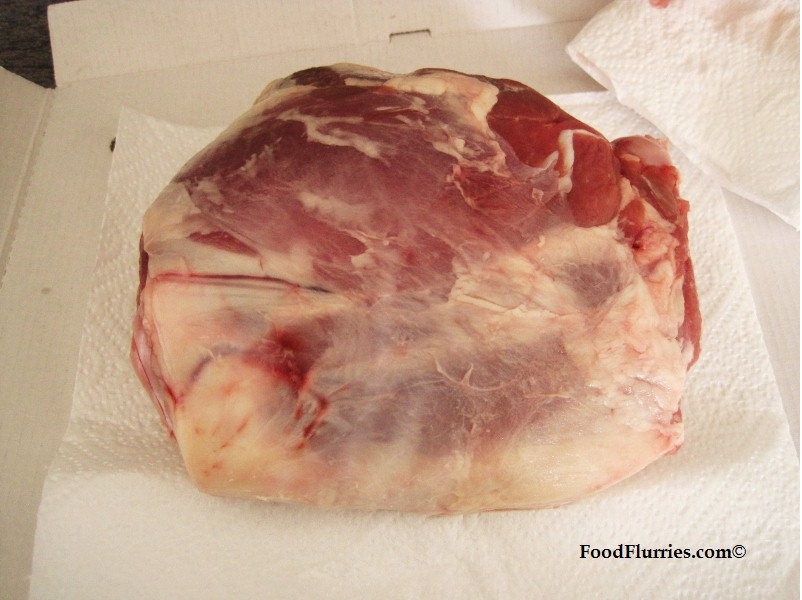
This piece was bought on another day ~ noton the day of the party. This one had hardly any fat left on it as I did not pre-order this.
Next, prepare the marinade. All I ever use for my lamb marinade is a mixture of garlic, mustard, dried rosemary, salt & pepper. I do tend to use a combination of whole grain and smoothe mustard simply for added texture. Garlic is made into a paste by first slicing them thinly, then smashing them to a pulp by using the back of my knife and some salt to help grind them down. Voila! Instant garlic paste without the use of a blender. Saves on washing up. The two mustards are then placed in a bowl along with the garlic paste, dried rosemary, pinch of salt and pepper.
Rub some olive oil and massage it onto the leg of lamb, followed by some salt, making sure to cover all surfaces. Now take your garlic mustard mix and paint it on the lamb using a pastry brush. Place the whole lamb in a large ziplock bag or any freezer bag and put it in the fridge to chill out for a good few hours. If i have the time I leave it in there overnight, but even if you get 3 – 4 hours is good enough. Take it out 30 mins before putting it in the oven to come up to room temp.
Now here is the important bit ~ the actual act of roasting. You want to ideally have a deep-ish roasting tin of some kind ~ accompanying racks are optional. Mine comes with an inner rack so this is what I place my lamb on. If you do not have a rack then make a bed of veggies at the bottom comprising of onions, garlic, chopped parsnips or spuds. Then place the lamb on top of said bed of veggies, the idea being you don’t want the meat to stick to the pan, and neither do you want the juices to burn by hitting an exposed bottom of a pan.
My method (using a roasting rack) is to put the meat in a very hot 220º – 250ºC oven (dry pan) for a good 20 or so minutes to get a nice crust going. I turn my oven all the way up coz even when it says it is well over 200ºC I don’t really think it is accurate since I don’t own a professional oven. Once that happens, I remove the pan briefly, add about 1 cup of plain water to the bottom and loosely cover the pan with foil. Drippings from the lamb will fall into this water, and hey PRESTO! … instant sauce! Now turn down the oven to 170ºC and leave the lamb in there for the next 4 hrs ~ and forget about it. Seriously. Go knit something or take a long luxurious bubble bath. The long slow heat will break down muscle fibres and the meat will be tender.
After 4 hrs remove the lamb from the roasting tin, set aside on a carving board and cover losely with foil to rest at least 10 – 20 mins before even THINKING about cutting into it. By letting the meat “rest” you are allowing the muscles to relax and all the blood and juice to get reabsorbed into the tissue. Now when you carve it you won’t get juice running all over your carving board.
In the meantime, make the sauce. I know I said the water at the bottom of the pan plus the drippings will give you an instant sauce but it isn’t seasoned yet. Set the roasting pan directly on a stove burner and turn in on medium-low heat. Depending on how much gravy you want it to stretch out to all liquid accordingly, be it water or stock. I use Knorr natural gravy stock pot for added flavour and some extra water. I also add in any leftover garlic mustard marinade. Simmer until the desired consistancy is reached.
Carve and serve your luscious roast with all the trimmings you desire : roast root veggies, glazed carrots, minted peas, mint jelly… etc. This meal is so delish and satisfying that if you serve it your guests will be very happy you did. Here are the quantities used to make the marinade.
- 1 tbsp whole grain mustard
- 1.5 tbsp smooth Dijon mustard
- 4 cloves garlic, minced
- pinch of salt
- pinch of black pepper
- 1 tbsp olive oil.
~ ENJOY!! ~


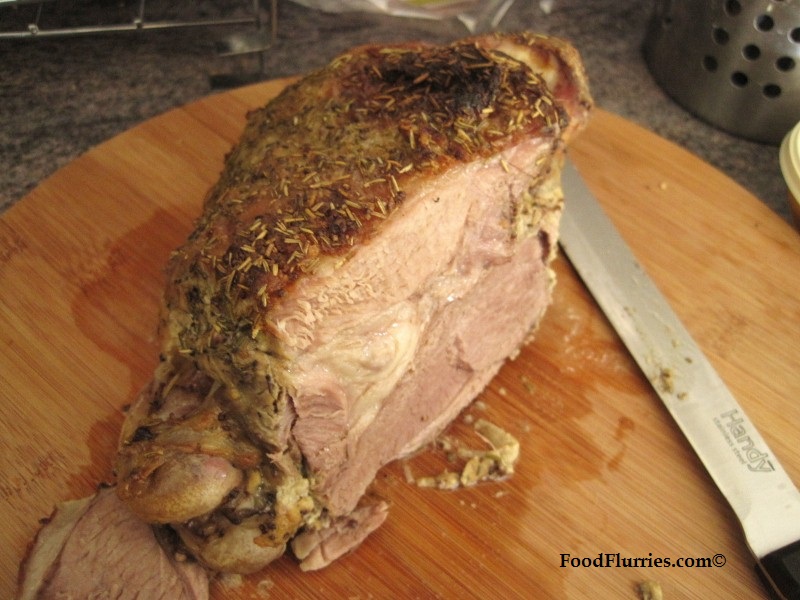

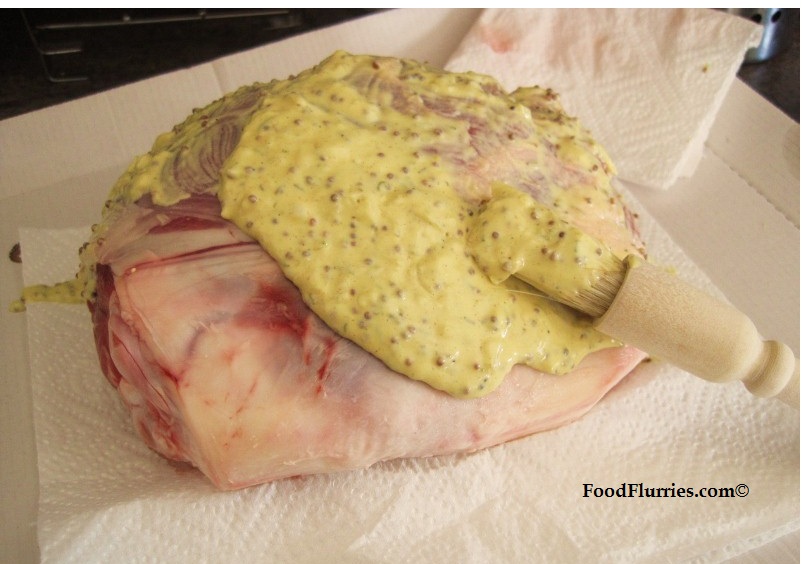
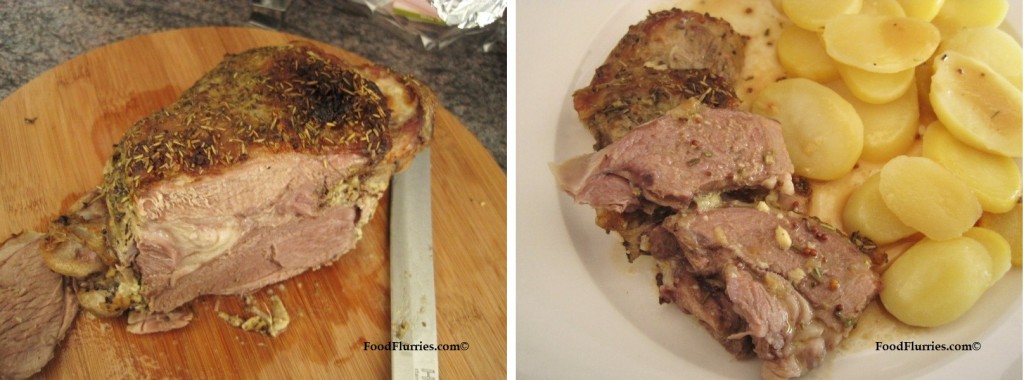

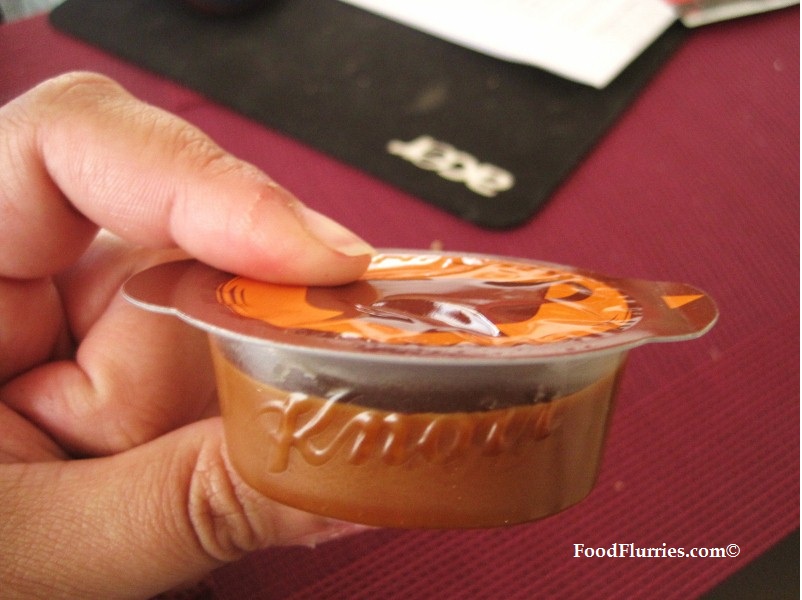
What people are saying…